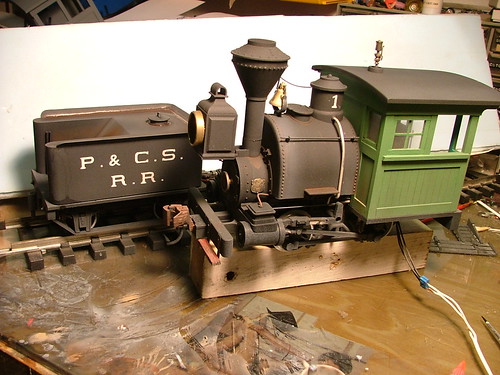I stole this photo fair and square from the Classic Trains Newsletter that came in my email, today. Some of you probably got it, too. I use the photo to illustrate something that has puzzled me for a long time; why do folks in this hobby (some) insist on weathering their locomotives to the point that they do not appear safe to operate, with rust dripping off them?
As you can see in the photo, these brutes are very well maintained, sparkling, even. Yeah, they were probably spruced up for the photo shoot, but I really doubt that much effort was spent, beyond a general titivation.
There ain’t no rust, here. Even the shop floor is clean.






